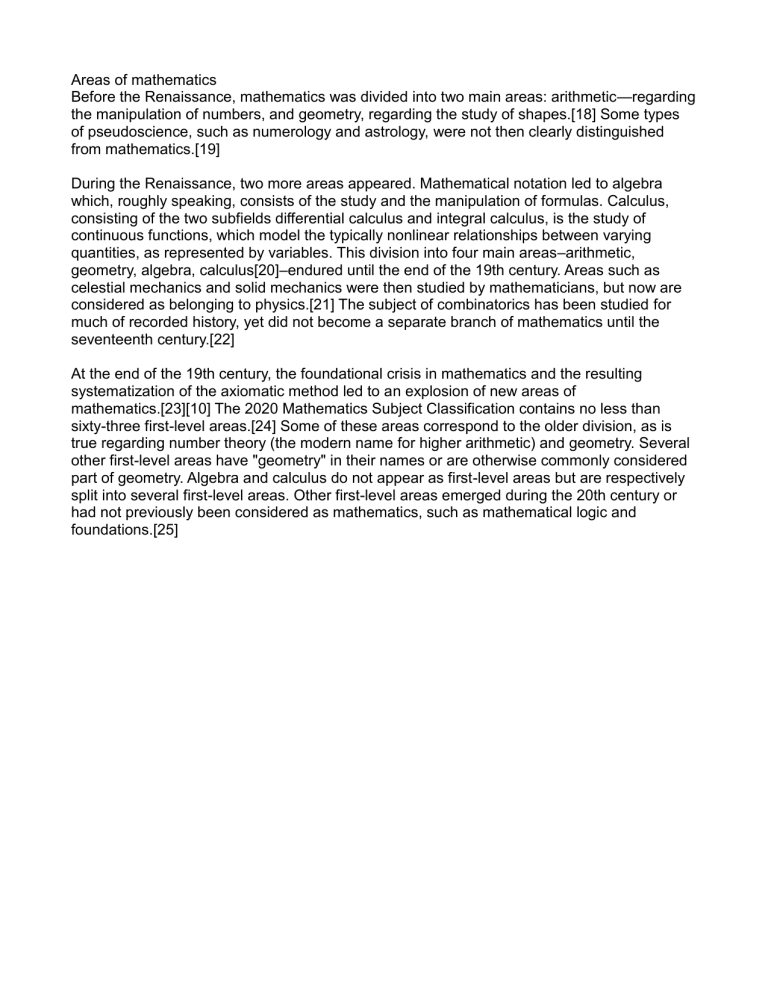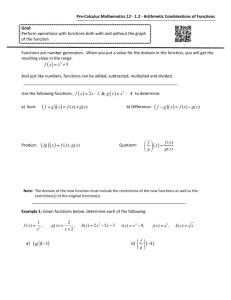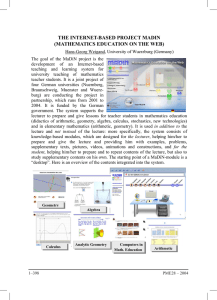
Areas of mathematics Before the Renaissance, mathematics was divided into two main areas: arithmetic—regarding the manipulation of numbers, and geometry, regarding the study of shapes.[18] Some types of pseudoscience, such as numerology and astrology, were not then clearly distinguished from mathematics.[19] During the Renaissance, two more areas appeared. Mathematical notation led to algebra which, roughly speaking, consists of the study and the manipulation of formulas. Calculus, consisting of the two subfields differential calculus and integral calculus, is the study of continuous functions, which model the typically nonlinear relationships between varying quantities, as represented by variables. This division into four main areas–arithmetic, geometry, algebra, calculus[20]–endured until the end of the 19th century. Areas such as celestial mechanics and solid mechanics were then studied by mathematicians, but now are considered as belonging to physics.[21] The subject of combinatorics has been studied for much of recorded history, yet did not become a separate branch of mathematics until the seventeenth century.[22] At the end of the 19th century, the foundational crisis in mathematics and the resulting systematization of the axiomatic method led to an explosion of new areas of mathematics.[23][10] The 2020 Mathematics Subject Classification contains no less than sixty-three first-level areas.[24] Some of these areas correspond to the older division, as is true regarding number theory (the modern name for higher arithmetic) and geometry. Several other first-level areas have "geometry" in their names or are otherwise commonly considered part of geometry. Algebra and calculus do not appear as first-level areas but are respectively split into several first-level areas. Other first-level areas emerged during the 20th century or had not previously been considered as mathematics, such as mathematical logic and foundations.[25]



